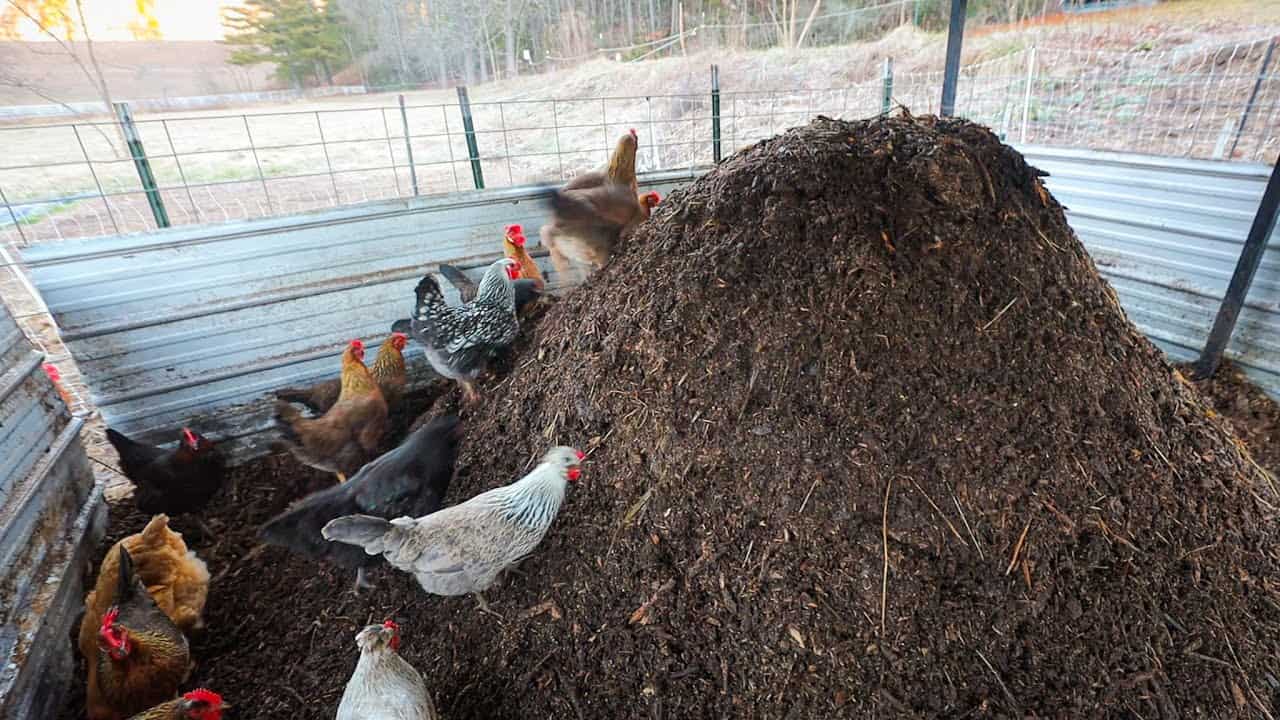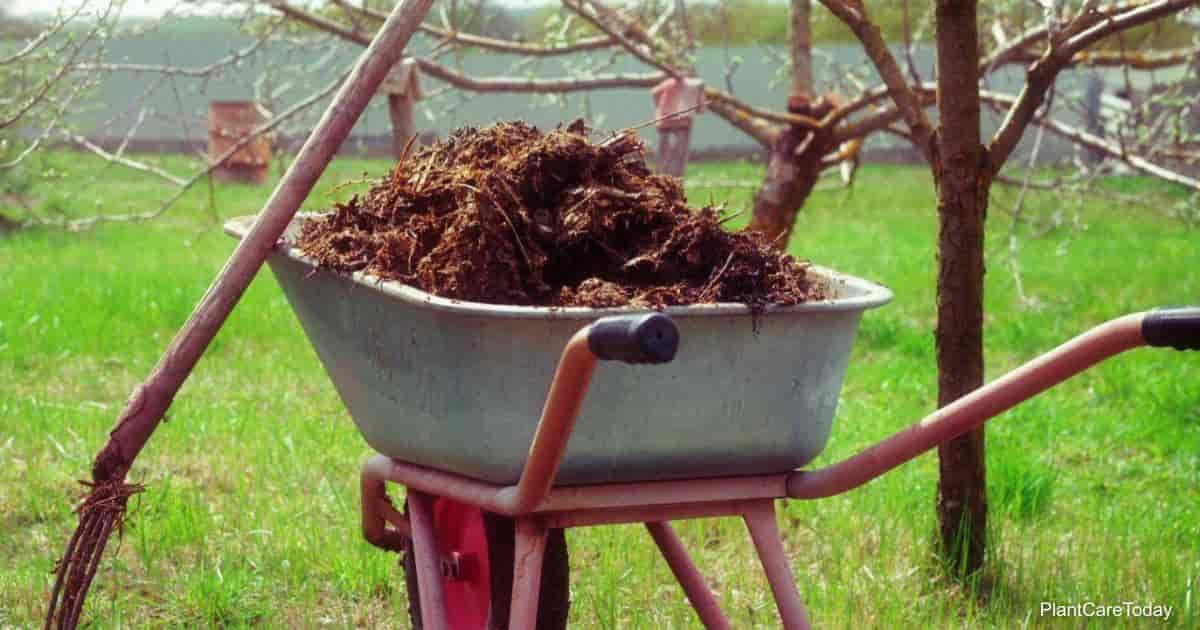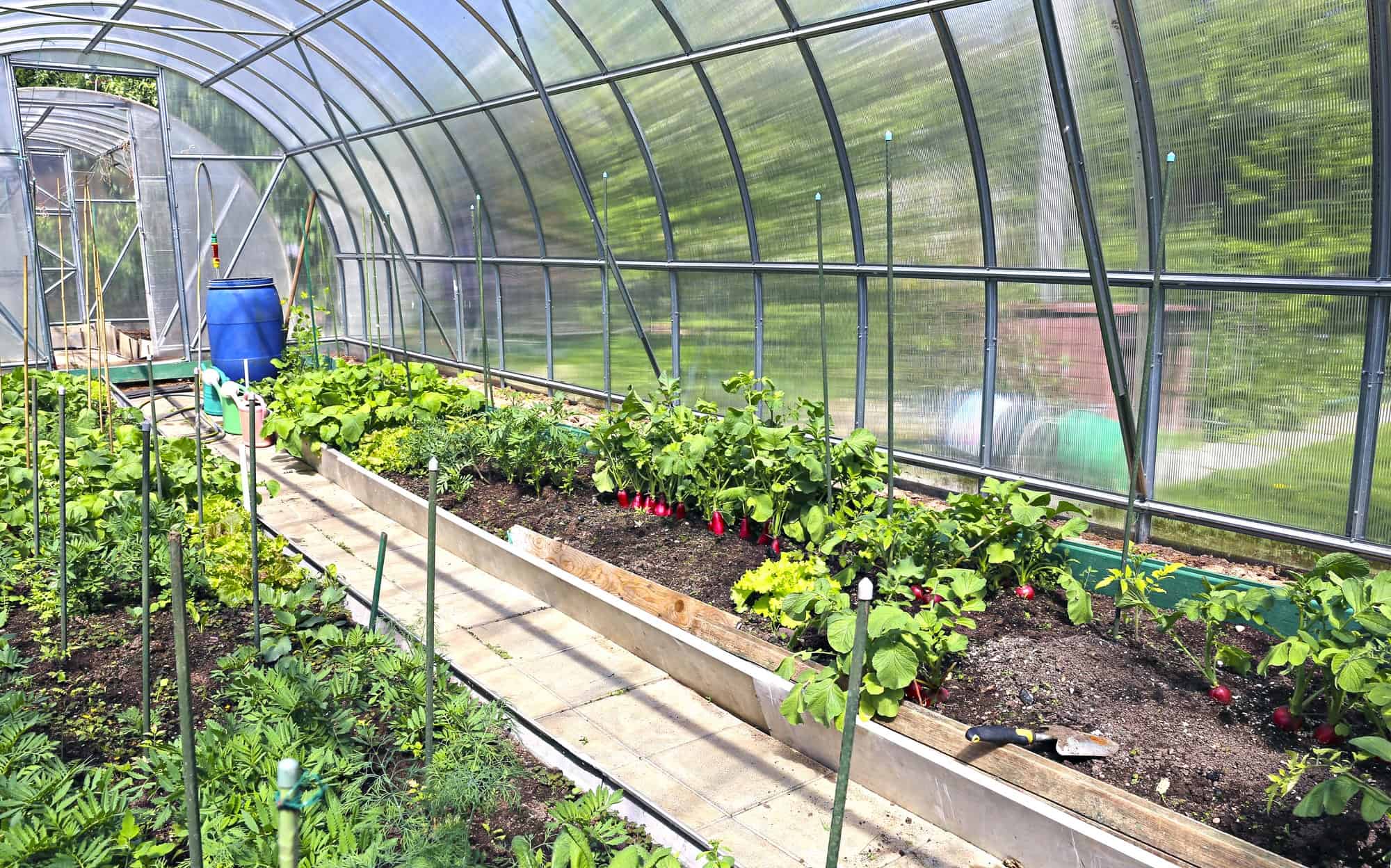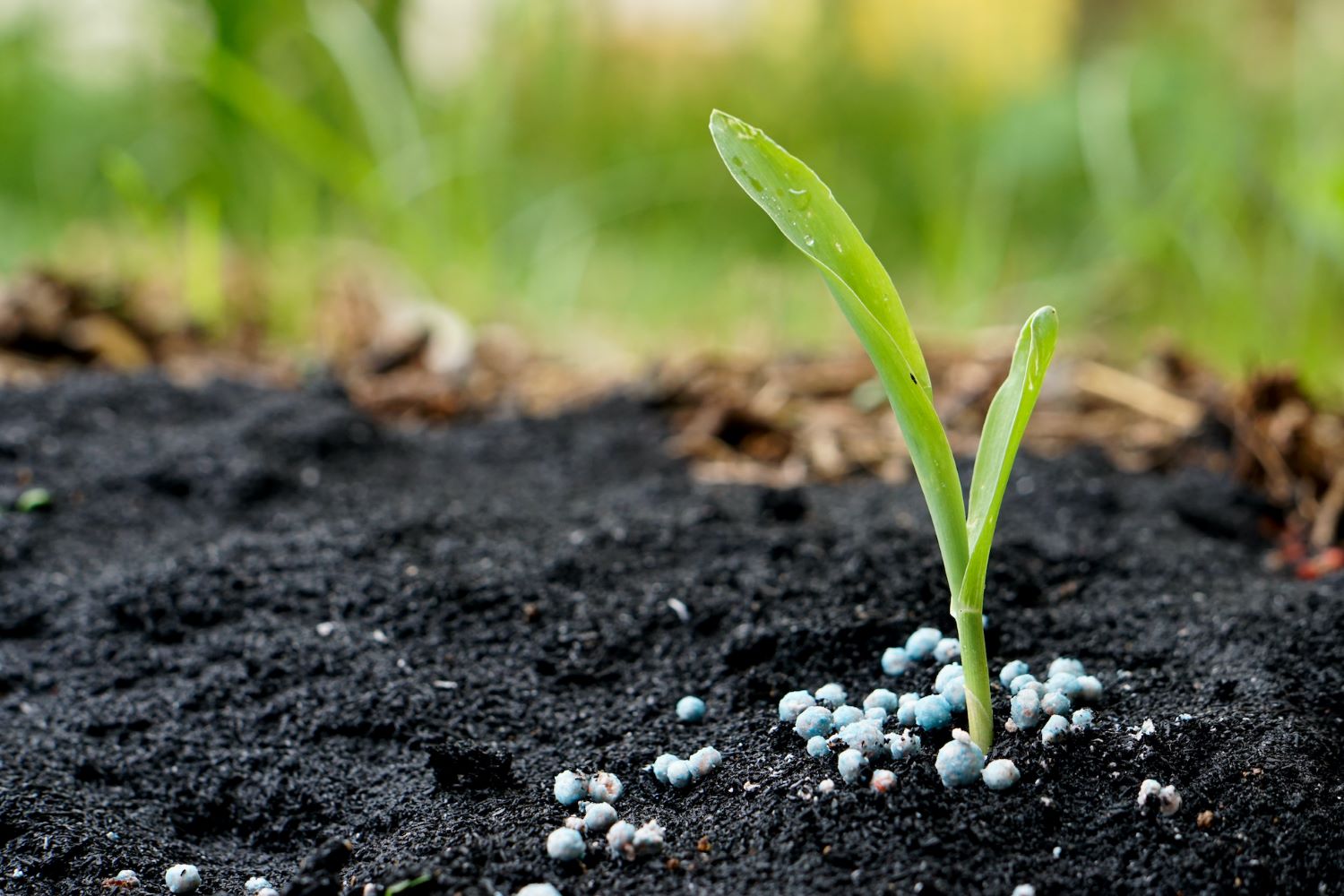Home>Gardening Tips and Tricks>Eco-Friendly Gardening>How Long Does It Take To Compost Chicken Manure


Eco-Friendly Gardening
How Long Does It Take To Compost Chicken Manure
Modified: January 22, 2024
Learn how long it takes to compost chicken manure and discover eco-friendly gardening practices for optimal results.
(Many of the links in this article redirect to a specific reviewed product. Your purchase of these products through affiliate links helps to generate commission for Chicagolandgardening.com, at no extra cost. Learn more)
Table of Contents
Introduction
Welcome to the world of eco-friendly gardening! If you’re looking for a way to improve the health and sustainability of your garden while reducing waste, composting chicken manure is the answer. Not only is it an effective method for recycling organic materials, but it also provides numerous benefits to your plants and the environment.
Composting chicken manure is a process that involves decomposing organic matter to create nutrient-rich soil that can be used to nourish plants. It’s an excellent way to harness the power of nature and create a sustainable cycle in your gardening practices.
In this article, we’ll delve into the world of composting chicken manure, exploring the benefits, factors affecting composting time, proper composting techniques, and how to monitor and troubleshoot the process. Additionally, we’ll discuss how to harvest and use the composted chicken manure in your garden.
Whether you’re a seasoned gardener or just starting out, incorporating eco-friendly practices like composting into your routine can have a significant impact not only on the health of your plants but on the planet as well. So, let’s dive in and learn how to turn chicken manure into black gold for your garden’s success!
The Benefits of Composting Chicken Manure
Composting chicken manure offers a multitude of benefits for both your garden and the environment. Let’s explore some of the advantages:
- Nutrient-rich soil: Chicken manure is a rich source of essential nutrients like nitrogen, phosphorus, and potassium. By composting it, you create a powerful organic fertilizer that can improve soil fertility and enhance plant growth.
- Improved soil structure: The organic matter in chicken manure helps to improve soil structure and water-holding capacity. It can enhance aeration in heavy clay soils and provide better drainage in sandy soils, creating a healthy, well-balanced soil environment for plant roots.
- Reduced reliance on synthetic fertilizers: Composting chicken manure reduces the need for synthetic fertilizers, which can be harmful to the environment when overused. By producing your own nutrient-rich compost, you can minimize the use of chemical-based fertilizers and promote a more sustainable gardening approach.
- Cost-effective solution: Using composted chicken manure eliminates the need to purchase expensive commercial fertilizers. By recycling waste from your own chickens or sourcing it locally, you can save money while still providing your plants with the nutrients they need.
- Environmental benefits: Composting helps to divert organic waste from landfill, reducing greenhouse gas emissions and promoting a more sustainable waste management system. By choosing to compost chicken manure, you contribute to a healthier environment and reduce your carbon footprint.
- Pest and disease suppression: Properly composted chicken manure can help suppress pests and diseases in your garden. The high temperatures reached during the composting process can kill weed seeds, harmful bacteria, and pathogens, minimizing the risk of infestations and plant diseases.
- Long-lasting soil amendment: The composted chicken manure has long-lasting effects on soil health. It slowly releases nutrients over time, providing a steady supply of nourishment to your plants. This ensures continuous plant growth and prevents nutrient deficiencies.
The benefits of composting chicken manure are clear. By harnessing this valuable resource, you can improve the health and productivity of your garden, reduce waste, and contribute to a more sustainable and environmentally-friendly approach to gardening.
Factors Affecting Composting Time
Composting time can vary depending on several factors. Understanding these factors will help you manage your composting process more effectively. Here are some key factors that can affect the time it takes to compost chicken manure:
- C/N ratio: The carbon-to-nitrogen (C/N) ratio is crucial for successful composting. Chicken manure has a high nitrogen content, which can result in a “hot” compost. To balance this, add carbon-rich materials such as dry leaves, straw, or wood chips to achieve a proper C/N ratio (typically around 30:1). This balance ensures efficient decomposition and speeds up the composting process.
- Particle size: The size of the chicken manure particles can influence composting time. Finely shredded or chopped material breaks down faster than larger pieces. Consider using a shredder or mower to break down large clumps of manure before composting.
- Moisture levels: Adequate moisture is essential for microbial activity and decomposition. Chicken manure should be moist like a wrung-out sponge. Too much moisture can lead to anaerobic conditions, while too little can slow down decomposition. Regularly monitor moisture levels and adjust accordingly by adding water or dry materials as needed.
- Aeration: Oxygen is necessary for the activity of aerobic microorganisms that drive the composting process. Proper aeration ensures faster decomposition and prevents unpleasant odors. Turn the compost pile regularly to introduce fresh air and promote even decomposition.
- Temperature: Composting is a biological process that generates heat. The temperature of the compost pile influences the speed of decomposition. The optimal temperature range for composting chicken manure is between 130°F and 160°F (54°C-71°C). Use a compost thermometer to monitor the temperature and ensure it stays within this range for efficient breakdown.
- Compost pile size: The size of the compost pile can affect composting time. A larger pile tends to generate and maintain heat more effectively than a small pile. Consider building a compost pile that is at least three feet in height, width, and length to optimize the composting process.
- Composting method: There are various composting methods available, including traditional compost bins, tumblers, or vermicomposting with worms. Each method has its own advantages and considerations, which can influence the composting time. Choose a method that suits your resources, environment, and desired timeline.
By taking these factors into account and making appropriate adjustments, you can accelerate the composting process and obtain nutrient-rich compost more quickly. Remember to regularly monitor and assess the compost pile to ensure it is progressing smoothly.
Proper Composting Techniques for Chicken Manure
Composting chicken manure requires proper techniques to ensure optimal decomposition and produce high-quality compost. Here are some essential techniques to follow:
- Collecting and storing manure: Collect chicken manure and bedding materials from your coop or poultry farm. Use a shovel or rake to gather the manure, making sure to include a mixture of manure and bedding materials for better composting results. Store the collected manure in a covered bin or pile until you’re ready to start the composting process.
- Preparing the composting area: Choose a suitable location for your compost pile or bin. Ensure it’s well-drained and easily accessible. Clear the area of vegetation and level the ground. Consider using a compost bin or constructing a containment system to help manage the compost pile effectively.
- Creating the compost pile: Start by layering the chicken manure with carbon-rich materials like dry leaves, straw, or wood chips. Aim for a C/N ratio of around 30:1. Alternate between layers of manure and carbon materials to promote proper decomposition. Maintain a height of at least three feet to ensure efficient composting.
- Moistening: Moisture is critical for the composting process. Sprinkle water as you build the pile to ensure it is evenly moist throughout, similar to a wrung-out sponge. Monitor moisture levels regularly and adjust by adding water or dry materials as needed. Avoid oversaturation as it can lead to anaerobic conditions.
- Aeration: Proper aeration is essential for composting. Turn the compost pile every few weeks using a pitchfork or compost turning tool. This helps introduce fresh oxygen, promotes even decomposition, and prevents odors. Alternatively, consider using a compost tumbler or aerated composting system for easier turning.
- Temperature monitoring: Use a compost thermometer to monitor the internal temperature of the pile regularly. The temperature should be between 130°F and 160°F (54°C-71°C) to ensure proper breakdown of organic matter and kill pathogens and weed seeds. Adjust the pile if the temperature falls outside this range.
- Composting duration: The composting process typically takes several months to complete. Monitor the progress of the pile by observing temperature, moisture levels, and decomposition. The compost is ready when it turns dark brown, crumbles easily, and has an earthy smell. This usually takes between three to six months, depending on the factors discussed earlier.
- Finishing the compost: Once the compost is fully decomposed, allow it to mature for a few weeks before using it in your garden. This helps stabilize the nutrients and ensures any remaining pathogens are killed. You can further screen the compost to remove any large particles before application.
By following these proper composting techniques, you can ensure that your chicken manure composting process is efficient, effective, and yields nutrient-rich, high-quality compost for your garden.
Composting Chicken Manure Step-by-Step
Composting chicken manure is a straightforward process that can be broken down into simple steps. Here’s a step-by-step guide to help you successfully compost chicken manure:
- Collect the manure: Gather chicken manure along with bedding materials from your coop or poultry farm. Use a rake or shovel to collect a mixture of manure and bedding materials to create a balanced compost pile.
- Prepare the composting area: Choose a well-drained location for your compost pile. Clear the area of any vegetation and level the ground. Consider using a compost bin or constructing a containment system to manage the pile effectively.
- Create the compost pile: Begin by layering the chicken manure with carbon-rich materials such as dry leaves, straw, or wood chips. Aim for a C/N ratio of around 30:1. Alternate between layers of manure and carbon materials to facilitate decomposition. Maintain a pile height of at least three feet for optimal composting.
- Moisten the pile: Sprinkle water as you build the compost pile to maintain moisture levels. The pile should be evenly moist, similar to a wrung-out sponge. Regularly monitor moisture levels and adjust as needed by adding water or dry materials to maintain the proper moisture balance.
- Aerate the pile: Turn the compost pile every few weeks using a pitchfork or compost turning tool. This promotes aeration, allows for even decomposition, and prevents odors. Alternatively, you can use a compost tumbler or an aerated composting system for easier turning.
- Monitor temperature: Regularly check the internal temperature of the compost pile using a compost thermometer. The ideal temperature range for composting chicken manure is between 130°F and 160°F (54°C-71°C). Adjust the pile if the temperature falls below or exceeds this range to ensure efficient breakdown.
- Patience and monitoring: Composting chicken manure takes time, typically several months. Monitor the progress of the compost pile by observing temperature, moisture levels, and decomposition. The compost is ready when it turns dark brown, crumbles easily, and has an earthy smell.
- Mature the compost: Once the compost is fully decomposed, allow it to mature for a few weeks before using it in your garden. This helps stabilize the nutrients and ensures any remaining pathogens are killed. You can further screen the compost to remove any large particles before application.
Following these step-by-step instructions will guide you through the process of composting chicken manure effectively. Remember to be patient, as the composting process takes time, and regular monitoring and adjustments are crucial for successful composting.
Monitoring and Troubleshooting the Composting Process
Monitoring and troubleshooting the composting process is essential to ensure optimal decomposition and address any potential issues that may arise. Here are some key steps to effectively monitor and troubleshoot your chicken manure compost:
- Temperature: Regularly monitor the internal temperature of the compost pile using a compost thermometer. The desired temperature range for composting chicken manure is between 130°F and 160°F (54°C-71°C). If the temperature is too low, turn the pile to introduce oxygen and encourage microbial activity. If the temperature is too high, adjust the pile by adding more carbon-rich materials or increasing aeration to prevent overheating or potential fire hazards.
- Moisture: Check the moisture levels of the compost pile regularly. Using your hand, squeeze a handful of compost to check if it feels moist, like a wrung-out sponge. Adjust the moisture content by adding water if the compost is dry or incorporating more dry carbon materials if it is too wet. Proper moisture is crucial for the composting process and microbial activity.
- Aeration: Ensure proper aeration of the compost pile by regularly turning it with a pitchfork or compost turning tool. This helps to introduce oxygen, which is essential for aerobic decomposition, and prevent anaerobic conditions that can lead to unpleasant odors. If the compost pile appears compacted or lacks airflow, consider incorporating bulking agents like wood chips or straw to improve aeration.
- Odor: Composting chicken manure may produce odors, especially if the pile lacks proper aeration or becomes too wet. If unpleasant odors occur, turn the compost pile to introduce oxygen and promote aerobic decomposition. Additionally, ensure the compost pile is properly moist but not oversaturated. If the odor persists, consider adding absorbent materials like wood chips or sawdust to help absorb excess moisture and neutralize odors.
- Composting time: The composting process for chicken manure typically takes several months. If the composting process is slow, ensure that the C/N ratio is balanced by adjusting the amount of carbon-rich materials added. Maintain appropriate moisture levels and keep the pile well-aerated. Also, verify that the compost pile is at the optimal temperature range. Adjusting these factors should help speed up the decomposition process.
- Pest and weed control: Monitor the compost pile for any signs of pests or weed growth. Regularly turning the pile can help minimize pest infestations and destroy weed seeds. If pest or weed issues persist, consider covering the compost pile with a tarp during the active composting phase or incorporate organic pest control measures to manage the problem.
- Compost quality: Assess the quality of the compost by checking its appearance, texture, and smell. Well-composted chicken manure will have a dark brown color, crumbly texture, and an earthy smell. If the compost appears incomplete or retains a strong ammonia smell, it may need more time to fully decompose. Continue monitoring and adjusting the composting conditions until the desired compost quality is achieved.
By consistently monitoring the composting process and addressing any issues that arise, you can ensure successful decomposition and ultimately obtain high-quality compost for your garden.
Harvesting and Using Composted Chicken Manure
Once your chicken manure compost is fully decomposed and matured, it is time to harvest and utilize this nutrient-rich black gold in your garden. Here are the essential steps for harvesting and using composted chicken manure:
- Harvesting: When the compost is ready, you can start harvesting it from the bottom or center of the compost pile. Use a shovel or garden fork to scoop out the composted material, being careful not to disturb any unfinished sections of the pile. Remove any large particles or debris as you harvest.
- Screening: To achieve a fine, uniform texture, consider screening the harvested compost. You can use a mesh screen or sifter to remove any remaining lumps, sticks, or large particles. This will provide you with a high-quality, consistent compost that’s easier to use and apply in your garden.
- Application: Apply the composted chicken manure to your garden beds, vegetable patches, or container plants. Spread a layer of compost evenly around the base of plants, avoiding direct contact with stems or leaves. Use a rake or garden fork to gently work the compost into the soil surface to promote nutrient absorption and enhance soil structure.
- Top-dressing: You can use composted chicken manure as a top-dressing for existing plants. Spread a thin layer of compost around the root zone, leaving a buffer space around the stem or trunk to prevent rot or stem damage. This top-dressing will slowly release nutrients into the soil, providing long-term nourishment for your plants.
- Compost tea: Another way to utilize composted chicken manure is by creating compost tea. Fill a container or bucket with water and add a generous amount of compost. Allow it to steep for 24 to 48 hours, stirring occasionally. Use this nutrient-rich liquid as a natural fertilizer by watering it directly onto the soil around your plants.
- Mulching: Incorporate composted chicken manure into your mulch layers. Apply a thin layer of compost on top of organic mulch materials such as straw, wood chips, or grass clippings. This additional organic matter will gradually decompose, enriching the soil and promoting plant growth.
- Repeat applications: Composted chicken manure is a valuable resource that can be reapplied to your garden on a regular basis. Aim to add a layer of compost each season or as needed to maintain soil fertility. This continuous application will support long-term plant health and productivity.
By harvesting and utilizing composted chicken manure in various ways, you can improve soil fertility, enhance plant growth, and contribute to a sustainable gardening practice. Remember to maintain a balance and avoid over-application to prevent nutrient imbalances in the soil. With proper use, your garden will flourish with the benefits of composted chicken manure.
Conclusion
Composting chicken manure is an eco-friendly and beneficial practice that not only helps reduce waste but also provides nutrient-rich soil for your garden. Throughout this article, we’ve explored the numerous advantages of composting chicken manure, including its ability to improve soil fertility, enhance plant growth, and reduce the reliance on synthetic fertilizers.
We’ve discussed the factors that can affect composting time, such as the carbon-to-nitrogen ratio, particle size, moisture levels, aeration, temperature, compost pile size, and composting method. By understanding and managing these factors, you can speed up the composting process and achieve optimal results.
Proper composting techniques, including collecting and storing manure, preparing the composting area, creating the compost pile, maintaining moisture levels, ensuring proper aeration, monitoring temperature, and allowing the compost to mature, are essential for successful composting. By following these techniques, you can effectively transform chicken manure into nutrient-rich compost that benefits your garden and the environment.
We’ve also emphasized the importance of monitoring and troubleshooting the composting process. Regularly monitoring temperature, moisture levels, aeration, and compost quality enables you to make necessary adjustments and address any issues that may arise, ensuring a successful composting journey.
Finally, we discussed how to harvest and use composted chicken manure in your garden. Whether it’s through direct application, top-dressing, compost tea, mulching, or repeat applications, utilizing this valuable resource will enhance soil health, promote plant growth, and contribute to sustainable gardening practices.
Composting chicken manure is a rewarding endeavor that not only transforms waste into valuable compost but also supports a more environmentally-friendly and self-sufficient approach to gardening. By incorporating these practices into your gardening routine, you can create a thriving garden while minimizing waste and promoting sustainability.
So, why not harness the power of composted chicken manure and take your gardening efforts to the next level? Get started today and experience the benefits of eco-friendly gardening with composted chicken manure!







